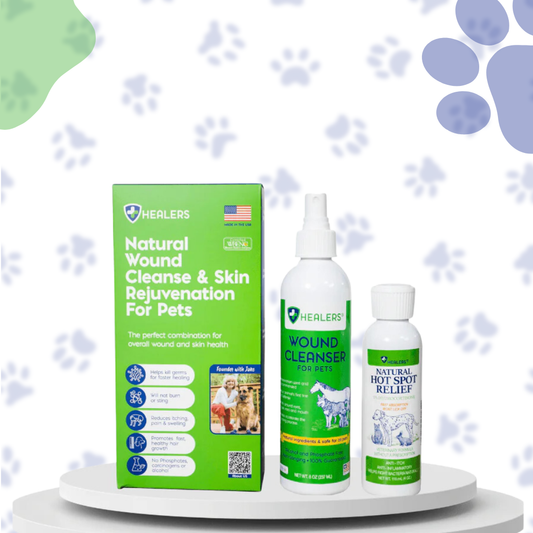How Cold is Too Cold for Dogs? Essential Tips to Keep Your Pet Warm and Safe
Share

Understanding Cold Tolerance in Dogs
Some breeds of dogs can withstand low temperatures but others cannot, at least not in the same way. Dog breed, its size, age, and coat thickness greatly influence how the dogs react to low temperatures. For instance it is quite apparent that breeds such as Huskies and Malamutes with their thick dry double coats are better insulated against temperature than thinner skinned Chihuahuas or Greyhounds.
In general, it’s best to avoid temperature drops below 45 °F (7°C) because they cause discomfort to small or thin coated, senior, etc. Overall, it is most advisable to take precautions when the temperature starts falling below 32 F (0 C). Temperatures below 20 degrees F (-6 degree C) can be particularly unsafe for the majority of the dogs, and could cause severe cases of frostbite or hypothermia.
Signs Your Dog is Too Cold
Recognizing the signs that your dog is too cold is crucial. Look for these warning signals:
- Shivering or trembling
- Whining or barking persistently
- Curling up tightly or attempting to find shelter
- Lifting paws off the ground due to discomfort
- Slowed movements or reluctance to walk
If you notice any of these behaviors, it’s time to take immediate action to warm up your pet.
Essential Winter Care Tips for Dogs

- Buy your dog, Protective Dog Boots. The winter season is particularly cumbersome to a dog’s foot when there is freezing of the pavement or salting of the roads leading to cracking of the feet and inflammation. It is also important to get good quality boots because they may be sensitive to cold or any substance that may come across it. URBAN WALKERS III are great to protect your dog, making it on the list of best products for covering your dog's paws. They are tough wearing, comfortable, protective and all round best dog boots of a top quality. They protect the skin and the paws to minimize injury and inflammation and to give your dog maximum comfort while frolicking in the snow.
- Moisturize to Prevent Cracked Paws Cold, dry weather can lead to dry, cracked paws. Regularly applying a pet-safe paw balm helps keep the skin moisturized. Combine this routine with protective dog shoes for optimal paw health.
- Keep Your Dog Dry Wet fur loses its insulating properties, making it easier for your dog to get cold. Always towel-dry your pet thoroughly after outdoor excursions in snow or rain.
-
Monitor for Hot Spots Cold weather can exacerbate certain skin conditions, such as hot spots, due to dryness and itching. If your dog starts to scratch or chew at irritated spots, immediate treatment is essential to prevent further discomfort.
Product Highlight: The Healers Hot Spot & Itch Relief Aid is a reliable hot spot ointment for dogs. This hot spot treatment for dogs is formulated by veterinarians and helps soothe irritated skin, making it a must-have during the dry, cold months when skin problems can flare up. - Use Warm Coats and Sweaters If your dog has a thin coat or is small in size, dressing them in a well-fitted dog sweater or coat helps maintain body heat. Look for items that cover the back and belly and have adjustable straps for a snug fit.
- Limit Time Outdoors On particularly cold days, limit your dog's exposure to the elements. Opt for shorter, more frequent walks and try to plan your outings during the warmest part of the day.
- Create a Cozy Resting Space Ensure your dog’s indoor space is warm and draft-free. Use a soft, padded bed with blankets for extra warmth. If your dog sleeps near doors or windows, consider moving their bed to a warmer spot.
How to Safeguard Your Dog’s Health During Winter

Apart from being a physical inconvenience, cold can compromise the wellbeing of a dog. Extremities are generally affected and the conditions may be aggravated by cold especially in aged dogs. Keep an eye on your pet’s physical condition and, if there is any lack of energy or pain in the movements, discuss this issue with your veterinarian.
Additional Tips for Pet Owners:
- Check paws regularly for any signs of frostbite or cracking.
- Maintain a healthy, nutrient-rich diet to support your dog's immune system.
- Provide plenty of water to prevent dehydration, which can be a concern in winter months when the air is dry.
Keep Your Dog Safe and Comfortable
Winter can be a beautiful time of year, and with the right precautions, your dog can enjoy it too. By recognizing the signs that your dog is too cold and implementing protective measures, you can ensure they stay warm and safe.
Stock up on winter care essentials like Urban Walkers and Healers Hot Spot & Itch Relief Aid for reliable hot spot treatment for dogs and protection against winter woes. With these tips and tools, your dog can thrive even in the chilliest months.





